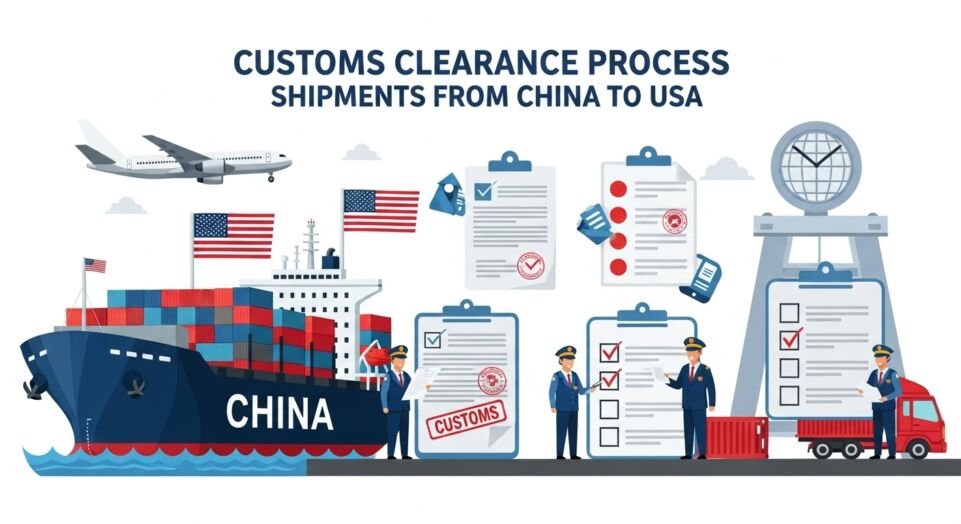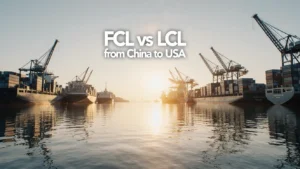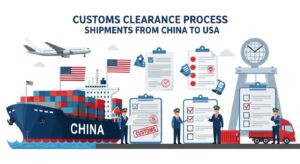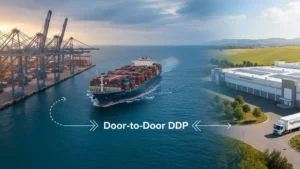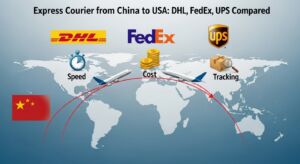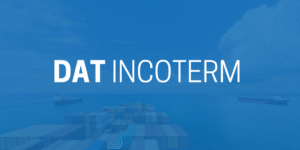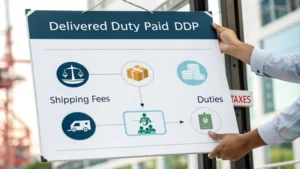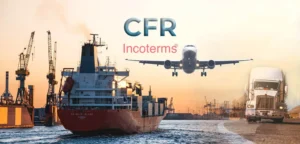Introduction
Customs Clearance from China to the USA involves multiple steps, and it is one of the most critical stages in international shipping. Proper clearance ensures that shipments comply with U.S. import regulations, avoids delays at ports, and prevents unexpected fees or penalties. However, challenges such as complex documentation requirements, customs inspections, tariffs, and potential misclassification of goods can impact delivery times and costs.
In this complete guide to shipping from China to the USA, we’ll walk you through the entire customs process step by step. You’ll learn how to prepare documents correctly, avoid common pitfalls, and ensure a smooth, cost-effective shipment. Keep reading to discover practical tips and strategies that can save you time, money, and stress.
Understanding Customs Clearance
What Is the Customs Clearance Process?
Customs clearance is the official procedure of submitting required documents to U.S. Customs and Border Protection (CBP) to allow goods to enter the country legally. It ensures that shipments comply with local laws, pay correct duties, and meet safety and trade standards. Efficient customs clearance avoids shipment delays, fines, and unexpected storage costs.
Why Proper Customs Clearance Matters for Shipments from China
For shipments from China, incomplete or incorrect documentation, misclassification of goods, or non-compliance with U.S. import rules can cause shipments to be held at the port, incur extra charges, or even be rejected. Smooth customs clearance ensures predictable costs, timely delivery, and uninterrupted supply chain operations.
Essential Documents for Customs Clearance

1. Commercial Invoice
The Commercial Invoice is one of the most critical documents required for customs clearance. It is issued by the seller and provides a detailed list of all goods being shipped. This includes the quantity, unit price, total value, and a description of each item. The invoice also contains the payment terms agreed upon between the buyer and seller, as well as the currency used in the transaction. Information about the buyer and seller, including their addresses and contact details, is also included. Customs authorities in the U.S. use the commercial invoice to calculate duties and taxes, verify the legality of the shipment, and ensure the declared value matches the cargo. Inaccuracies in this document can lead to delays, fines, or even seizure of goods.
2. Packing List
The Packing List provides detailed information about how goods are packed and shipped. It typically includes the number of packages, the weight and dimensions of each package, and the contents of each box or container. It also specifies the type of packaging used, such as boxes, pallets, or crates. This document allows customs officials to cross-check the actual cargo against the commercial invoice. A complete and accurate packing list helps speed up inspections at the port, reducing potential delays. Shipping companies also rely on it for proper handling, storage, and delivery. Without a clear packing list, shipments can be held for inspection or subjected to additional fees.
3. Bill of Lading / Airway Bill
The Bill of Lading (B/L) or Airway Bill (AWB) is a transport document issued by the carrier. For sea shipments, a Bill of Lading is used, while air shipments require an Airway Bill. This document serves as proof that the carrier has received the goods for transport. It includes information such as the shipper and consignee details, the route of transportation, and a description of the cargo. The B/L or AWB allows the consignee to track and receive the shipment at the destination. It also acts as a legal document for ownership and title transfer of goods. Customs authorities often require it to verify that the shipment matches the declared details in the commercial invoice and packing list.
4. Certificate of Origin
The Certificate of Origin (COO) is a document that certifies the country in which the goods were manufactured. It is typically issued by a recognized authority, such as the Chamber of Commerce. The certificate includes details about the exporter, the manufacturer, a description of the goods, and the country of origin. This document is essential for determining eligibility for preferential tariffs, duty exemptions, or compliance with specific import regulations. U.S. customs may require it for certain types of goods to ensure regulatory compliance. It can also be used when exporting goods to third countries to meet their import rules. Providing an accurate Certificate of Origin helps prevent shipment delays and ensures smooth customs clearance.
Pro Tip: Additional permits may be needed for food, health products, or restricted items. Check the U.S. FDA import guidelines
for relevant regulations.
Step-by-Step Customs Clearance Process

Step 1: Shipment Arrival at Port
- Shipment is logged into CBP’s system with a tracking number.
- Carrier, consignee, and basic shipment details are verified.
- Early coordination with your freight forwarder prevents storage fees and delays.
Step 2: Submission of Customs Documents
- Submit the commercial invoice, packing list, Bill of Lading/Airway Bill and certificate of origin.
- Ensure all information is accurate—errors in product description, value, or quantity can cause delays.
- Use the CBP Automated Commercial Environment (ACE) system for faster processing.
Step 3: Duties and Taxes Calculation
- Customs calculates tariffs based on HS codes, product value, and origin.
- Fees may include Merchandise Processing Fee (MPF), Harbor Maintenance Fee (HMF), and any applicable anti-dumping duties.
- A licensed customs broker ensures correct classification and fee calculation.
Step 4: Customs Inspection (if required)
- Selected shipments may undergo physical inspection or X-ray scanning.
- Proper labeling, packaging, and organized documentation reduce delays.
Step 5: Release and Delivery
- After duties are paid and inspections cleared, goods are released.
- Shipment is transported to the consignee or warehouse.
- Timely coordination with your freight forwarder ensures smooth delivery and avoids port storage charges.
Common Customs Clearance Challenges and How to Avoid Them
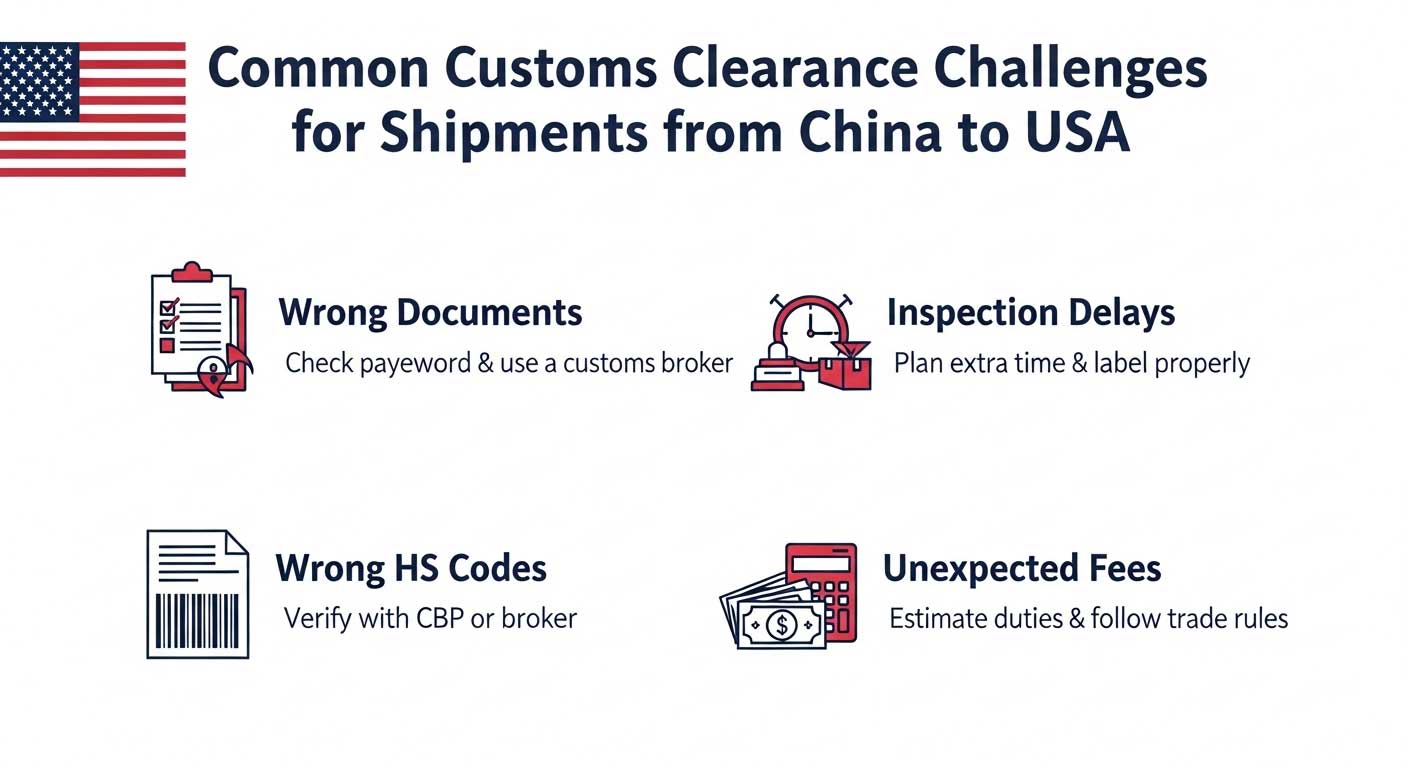
1. Incomplete or Incorrect Documentation
One of the most frequent challenges in customs clearance is submitting incomplete or incorrect documents. Missing information, errors in commercial invoices, packing lists, or Bills of Lading can cause customs authorities to hold shipments for review. Inaccuracies may include wrong product descriptions, incorrect weights, or mismatched shipment values. Such mistakes can result in delays, additional inspections, or fines.
Solution: Always double-check all documentation before submission. Work closely with a licensed customs broker who understands U.S. import regulations and can ensure that every required document is accurate and complete. Maintaining proper records reduces the risk of errors and speeds up the clearance process.
2. Shipment Delays from Inspections
Customs inspections are a standard part of the import process, but they can cause unexpected delays. Shipments may be randomly selected for physical inspection or targeted due to high-risk categories, irregular documentation, or labeling issues. Delays can impact delivery schedules and lead to additional storage fees at ports.
Solution: Plan extra lead time for potential inspections when scheduling shipments. Ensure that goods are properly packaged, labeled, and clearly described in all documentation. Using tamper-proof packaging and organized labeling can minimize inspection time. Partnering with an experienced freight forwarder or customs broker can also help anticipate inspection requirements.
3. Misclassification of Goods
Misclassifying products under the Harmonized System (HS) codes is a common problem. HS codes determine the duties, taxes, and regulatory requirements for each shipment. An incorrect classification can result in overpaying duties, fines, or even seizure of goods. Some products have multiple possible HS codes, making accurate classification critical.
Solution: Always verify HS codes using official CBP resources or consult a licensed customs broker. Accurate classification ensures that shipments are subject to the correct tariffs and comply with U.S. import regulations. Staying updated on HS code changes also helps prevent mistakes and unexpected costs.
4. Unexpected Customs Fees
Unexpected customs fees can arise due to incorrect duty calculations, additional inspections, or sudden changes in U.S. trade regulations. Importers may be surprised by extra charges if they do not plan ahead, affecting cash flow and overall shipping costs.
Solution: Estimate duties and taxes in advance using online CBP calculators or consultation with a customs broker. Stay updated on trade regulations, tariffs, and any import restrictions that may apply to your goods. Always budget for contingencies to cover unexpected fees, and choose a freight forwarder who provides transparent cost breakdowns to avoid surprises.
Tips for a Smooth Customs Clearance
1. Partner with a Reliable Freight Forwarder
Working with an experienced freight forwarder is one of the most important steps for smooth customs clearance from China to USA. A professional forwarder manages all shipping logistics, from preparing and reviewing documents to coordinating with carriers, including express courier shipments from China to USA . They ensure compliance with U.S. customs regulations and help prevent costly mistakes. Experienced forwarders can anticipate potential issues such as inspections, special handling requirements, or carrier delays. They also act as a liaison between you and customs authorities, speeding up communication and problem resolution. Choosing a trusted partner reduces stress and ensures your shipment arrives on time, whether using standard or express shipping.
2. Ensure Accurate Product Classification
Correctly classifying your products using Harmonized System (HS) codes is essential. HS codes determine the duties, taxes, and regulations that apply to your shipment. Misclassification can lead to overpayment, delays, fines, or even seizure of goods. Always verify codes using official CBP resources or consult a licensed customs broker. Accurate classification ensures compliance with U.S. import rules and smooth processing at customs. It also helps in planning shipping costs and avoiding unexpected financial surprises.
3. Keep All Documents Ready and Updated
Having organized and accurate documents is key to avoiding delays during customs clearance. Essential paperwork includes the commercial invoice, packing list, Bill of Lading, and Certificate of Origin. Make sure that all documents match the actual shipment details and are updated with the latest information. Properly prepared documents facilitate faster inspection and approval by customs authorities. Keeping digital and physical copies available ensures that any discrepancies can be quickly resolved. This proactive approach reduces the risk of delays and unnecessary fees.
4. Stay Informed About U.S. Import Regulations
Understanding U.S. import regulations is crucial for hassle-free customs clearance. Be aware of prohibited items, FDA requirements, labeling rules, and trade policies that may affect your shipment. Import laws can change frequently, so staying updated helps prevent unexpected issues at the port. A solid knowledge of regulations allows you to plan your shipments better and avoid compliance violations. Consulting official CBP sources or working with a knowledgeable customs broker can ensure you meet all requirements. Staying informed ultimately saves time, money, and potential legal complications.
Final Thoughts
The Customs Clearance Process for Shipments from China to USA is a critical step in international shipping. By ensuring accurate documentation, working with experienced freight forwarders , and understanding U.S. import regulations, businesses can prevent delays, avoid unexpected fees, and maintain smooth supply chain operations. Efficient customs clearance saves time, reduces costs, and ensures timely delivery to your customers.
FAQ – Customs Clearance Process for Shipments from China to USA
What is customs clearance?
It’s the process of getting your imported goods approved by U.S. Customs before delivery.
How long does customs clearance take?
Typically 1–3 days if all documents are correct and there are no inspections.
What documents are required?
Commercial invoice, packing list, bill of lading, and customs declaration.
Who handles customs clearance?
Usually your freight forwarder or customs broker manages the process.
What happens if my documents are incomplete?
Delays, fines, or even shipment holds can occur until issues are resolved.
Are there import duties when shipping from China to the USA?
Yes. Duties and taxes depend on the product category and HS code.
How can I speed up customs clearance?
Work with a reliable forwarder, provide accurate documentation, and follow U.S. import regulations.
